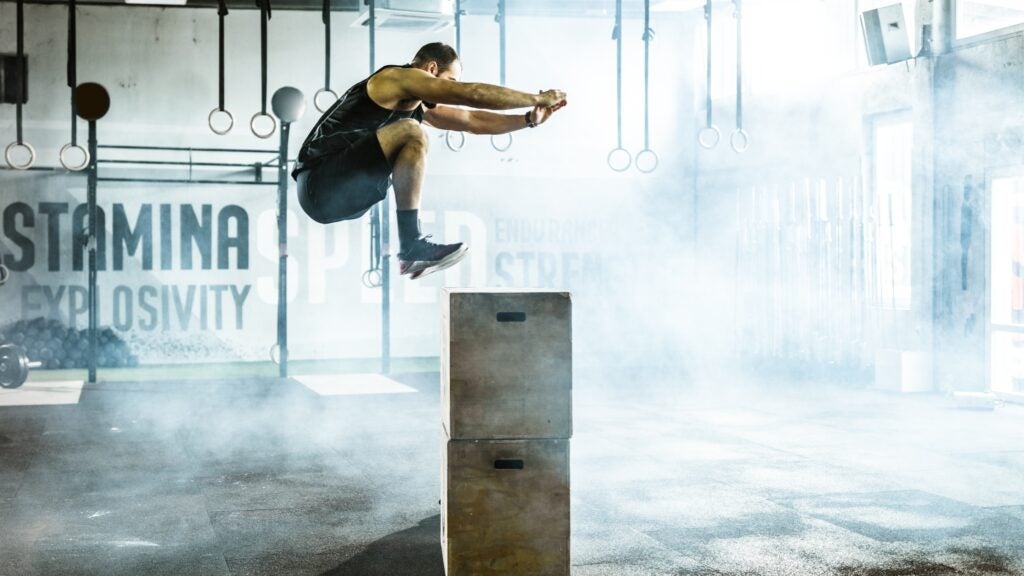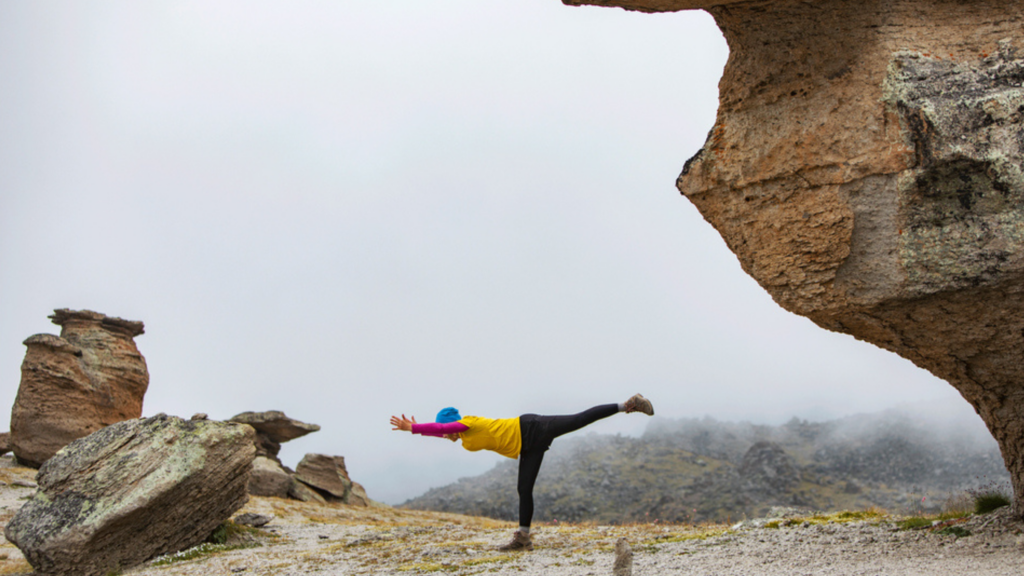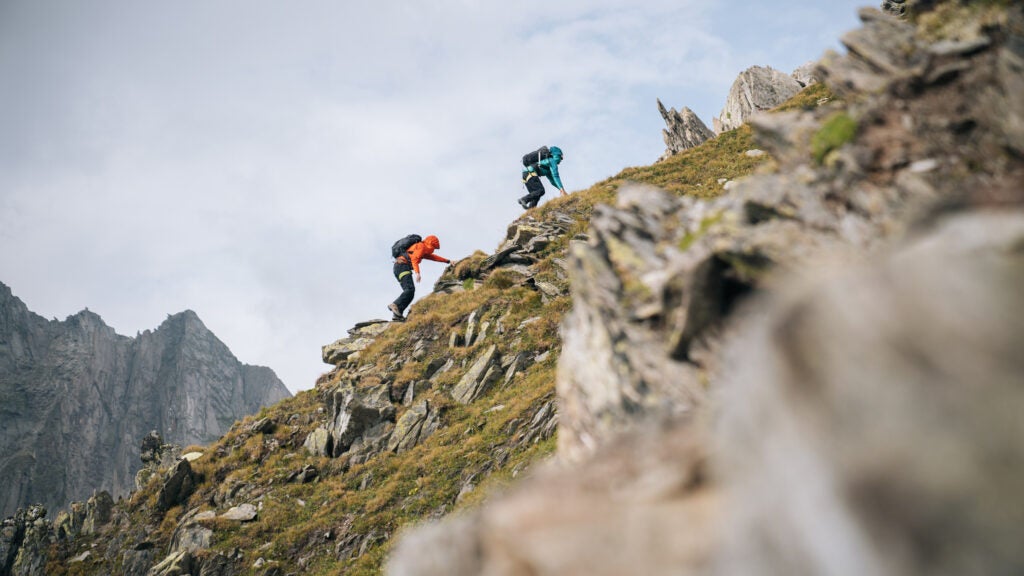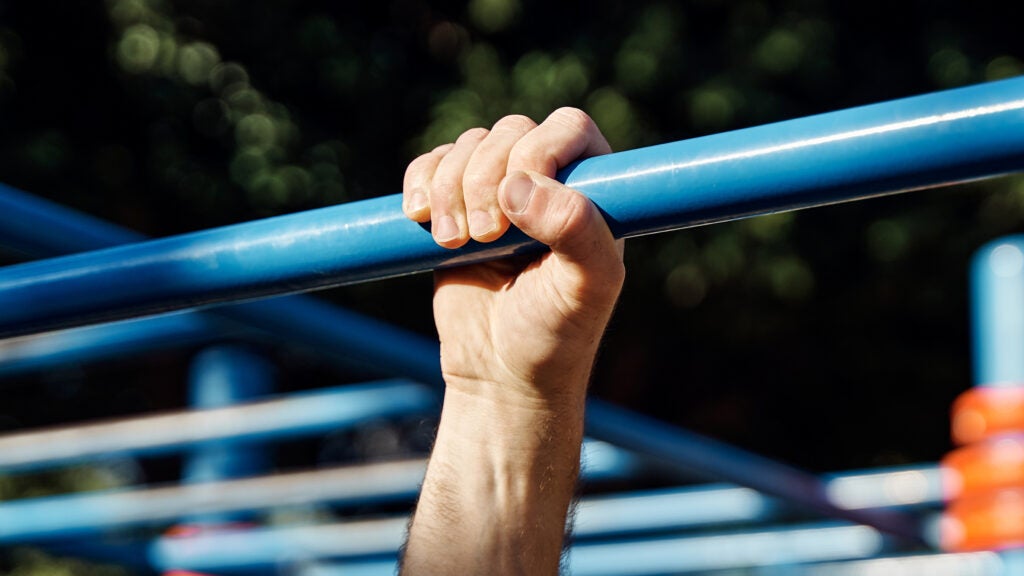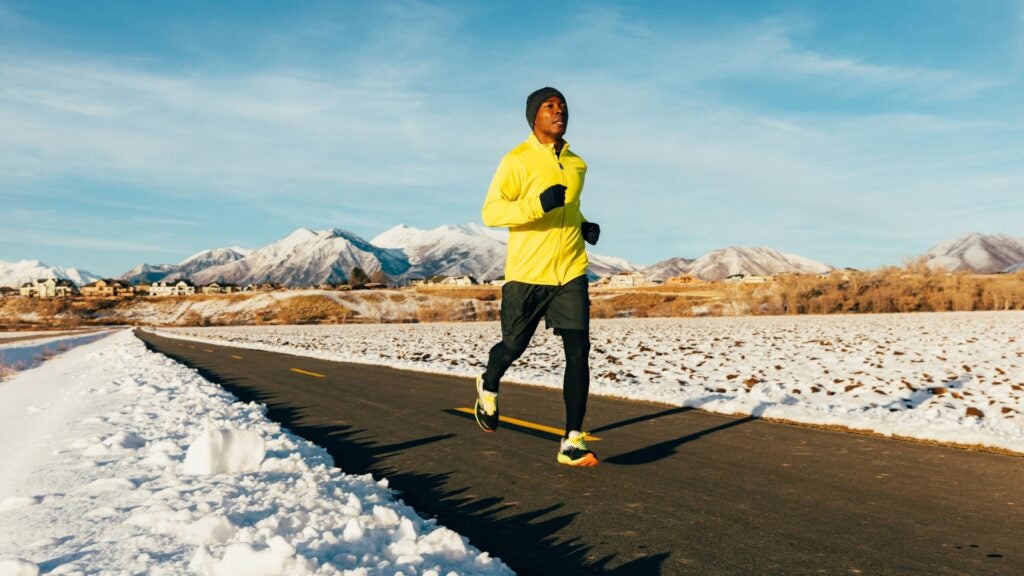The smoking gun, for me, is the hill sprint at the end of the workout. I can still keep up with some of my younger training partners in tempo runs and mile reps, but when it comes to blasting uphill, I get left in the dust. That sort of explosive muscle power used to be right in my wheelhouse, but now that I’m in my late 40s, those gears are missing.
I’m hardly alone. The decline of muscle power is one of the hallmarks of aging in your 40s and beyond. That’s a problem, because power is one of the best predictors of how well you’ll be able to handle the typical activities of daily living, like climbing stairs and hoisting yourself out of a chair, in your later years. But scientists aren’t sure why power declines so quickly and inexorably with age. A new study in the Journal of Applied Physiology digs into this mystery, and its findings offer some clues about how to fight back against this loss of power.
Why Muscle Power Matters
Let’s start with a definition: power is equal to force times velocity. When we talk about muscle strength, we’re referring to how much force a muscle can exert. When we talk about muscle power, we’re talking about the combination of how much force we can exert and how quickly we can exert it. To bound up a hill, leap onto a box, or get up from the couch, you need to deliver force explosively rather than gradually. And sure enough, research over the years has found that power is more important than strength for predicting whether older people are able to successfully navigate the activities of daily living.
The problem is that power starts dropping earlier than strength, and proceeds to drop more steeply. A typical estimate is that you lose 0.5 to 1 percent of your muscle mass per year once you’re on the wrong side of 40. Strength generally follows a similar trajectory. In contrast, muscle power drops by 2 to 4 percent per year. It’s not clear where the additional losses come from: it could be that our brains send weaker signals to the muscles; the signals might get disrupted as they’re being transmitted through the nervous system; or something in the muscles themselves might change how they contract.
What the New Study Reveals
Researchers at Marquette University, led by Christopher Sundberg, tested a group of young adults with an average age of 23; a group of older adults with an average age of 70; and a group of very old adults with an average age of 86. The tests measured the maximum power the subjects could produce with their quadriceps, sitting with a bent knee then trying to straighten it as powerfully as possible. Using magnetic brain stimulation and electrical stimulation of the muscles, the researchers were able to tease out how much the brain and nervous system were contributing compared to the muscles themselves.
The resulting data is fairly complex and has some nuances (the study is free to read online if you’d like to dig deeper), but the overall picture is straightforward. Here’s how the maximum strength and power (divided by body weight) compare in three groups, for both men and women:
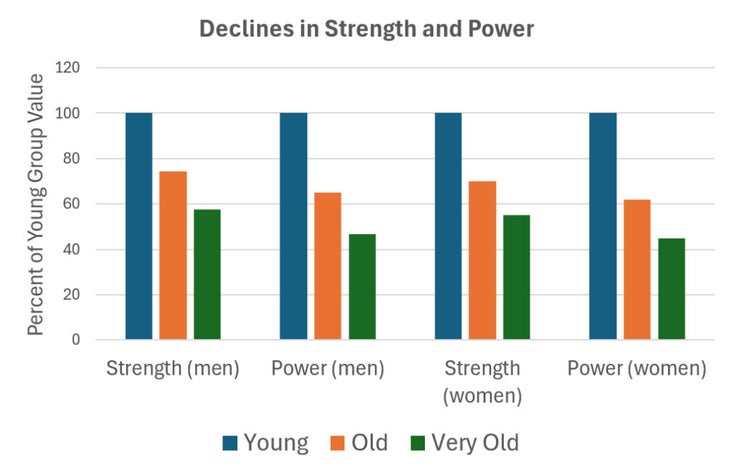
No surprises here: you lose muscle power with age, and as expected the decline in power is steeper than the decline in strength. But there didn’t seem to be appreciable declines in the ability of the brain and nervous system to signal for a powerful contraction, even in the “very old” group. Instead, it was the muscles themselves that didn’t contract as powerfully as they used to.
There are a bunch of possible reasons that muscles might lose some of their twitch. It might be that the muscle tissues are now marbled with fat and scar tissue, interfering with efficient contractions. The tendons might be less elastic, and thus less able to transmit force quickly. There might be changes in the chemistry of the muscle fibers themselves. The most likely candidate, Sundberg and his colleagues suggest, is that we tend to lose fast-twitch muscle fibers more quickly than slow-twitch fibers, leaving us with weaker and less explosive muscles overall.
What You Can Do About Declining Muscle Power
As with most aging studies, there’s a chicken-and-egg question here: am I slower on hill sprints because my muscle composition is changing, or is my muscle composition changing because I don’t do hill sprints and other explosive activities as often as I used to? For aerobic fitness, one study that I wrote about last year estimated that only about half of age-related declines are the inevitable result of aging, with the other half resulting from changed exercise habits. For muscle power too, the answer is probably somewhere in the middle.
It’s not just a general decline in activity, though. Subjects in Sundberg’s study wore an accelerometer to measure their daily step count as a rough estimate of their physical activity levels. There was almost no connection between daily physical activity and peak power: step count explained only 3 percent of the variance in peak power. I’m a big fan of aerobic exercise, but simply staying fit doesn’t seem to be enough to keep those fast-twitch fibers firing.
I’m venturing beyond what the study found, but the message I take from it is that if you want to hang on to as much explosive power as possible, you need to move and train in explosive ways. Plyometric exercises, which includes things like box jumps and bounding, are one approach. Another option is resistance training with lighter weights—less than about 60 percent of one-rep max, according the American College of Sports Medicine’s guidelines—where you focus on performing the movement as quickly as possible.
For the specific goal of hanging on to your fast-twitch fibers, there may also be a case for doing some heavy resistance training, with sets of six reps of fewer. If the weight is heavy enough, you’ll need to recruit your fast-twitch fibers to lift it. It’s worth remembering, after all, that power is force times velocity—so increasing the force you’re able to deliver is a key part of the equation. There’s evidence that once strength drops below a critical level, usable power drops off a cliff.
Which of these various approaches is most effective remains to be seen. For now, my plan is simple: more hill sprints.
For more Sweat Science, join me on Threads and Facebook, sign up for the email newsletter, and check out my book Endure: Mind, Body, and the Curiously Elastic Limits of Human Performance.
Source link

